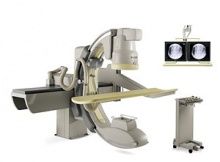3D Printing Permits Medical Students to Cut Costs and See Less Exposure to X-Rays

In high school, my Anatomy class took a field trip to the USC Kinesiology Lab to see the real human body. For some it was a harrowing experience, and not just because of the exposed organs. We learned that medical students often practice surgical procedures on cadavers. This is a good thing. Residents and doctors operating on vulnerable and ailing people ought to be honed and ready for the job. Medical students also must learn to operate heavy machinery with exposure to radiation with such devices as the C-arm. The name matches the machine which can inspect vital organs like the kidney. However, researchers at the University of Minnesota have found a safer and more cost-effective method for training by utilizing 3D printers and materials from Stratasys.
The Center for Research in Simulations and Education Technologies (CREST) found a way around expensive and risky testing for medical students by taking advantage of Stratasys’ PolyJet and FDM printing materials. What they are doing is producing realistic, anatomic models. To further the simulation, the Fortus 3D Production System and the Objet Connex multi-material 3D printer churn out organ models.
Real C-arm procedures allow physicians to perform “key-hole” operations with the operator using images on a screen. This is expensive training. With screens connected to the 3D printed model, students can practice at a fraction of the cost.
If anyone has ever received a procedure from a student in training from haircut to root canal to X-ray machine, it is full of anxiety. Practice makes perfect and Stratasys has provided CREST at University of Minnesota with a splendid model simulation. CREST also puts mutliple platforms and 3DP production to use. It is not just one printer or software, but the amalgamation that makes the simulation real.







